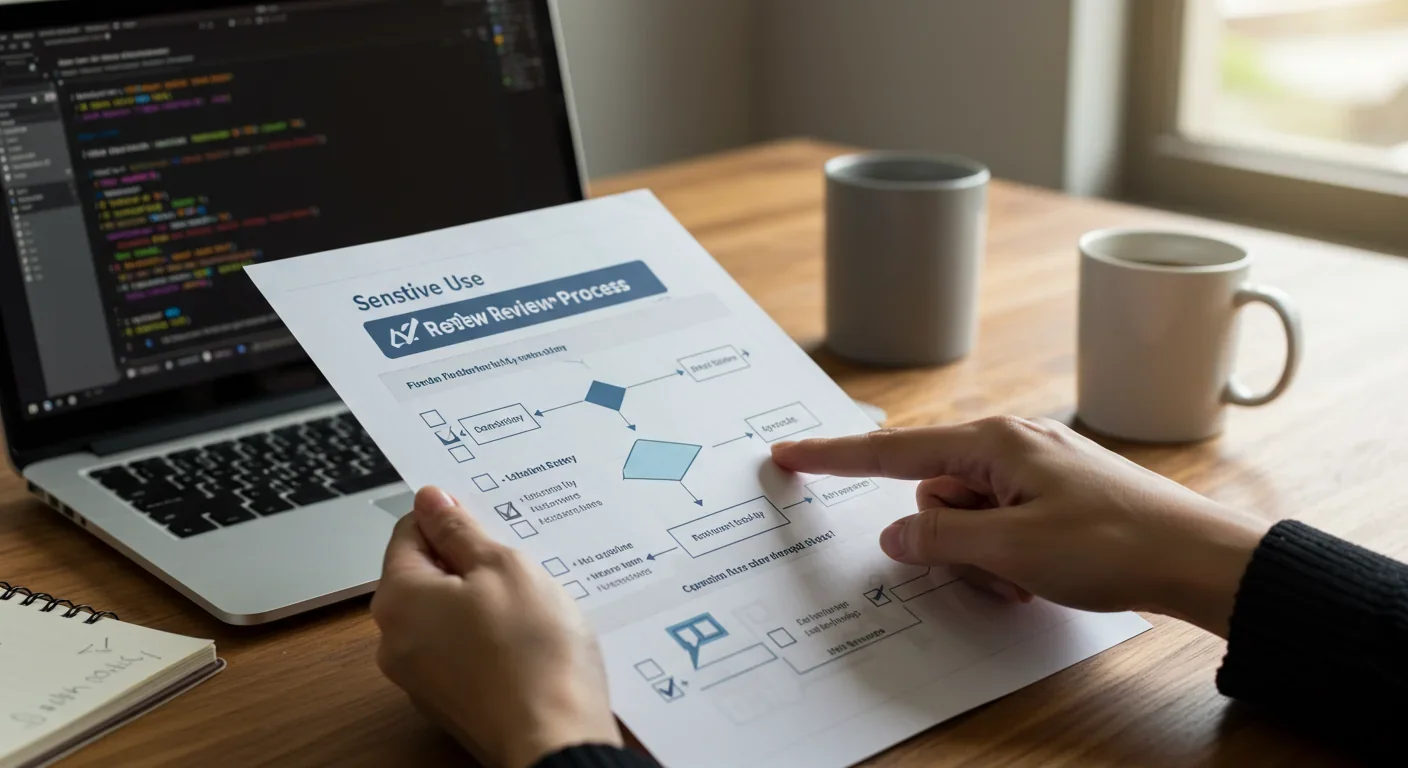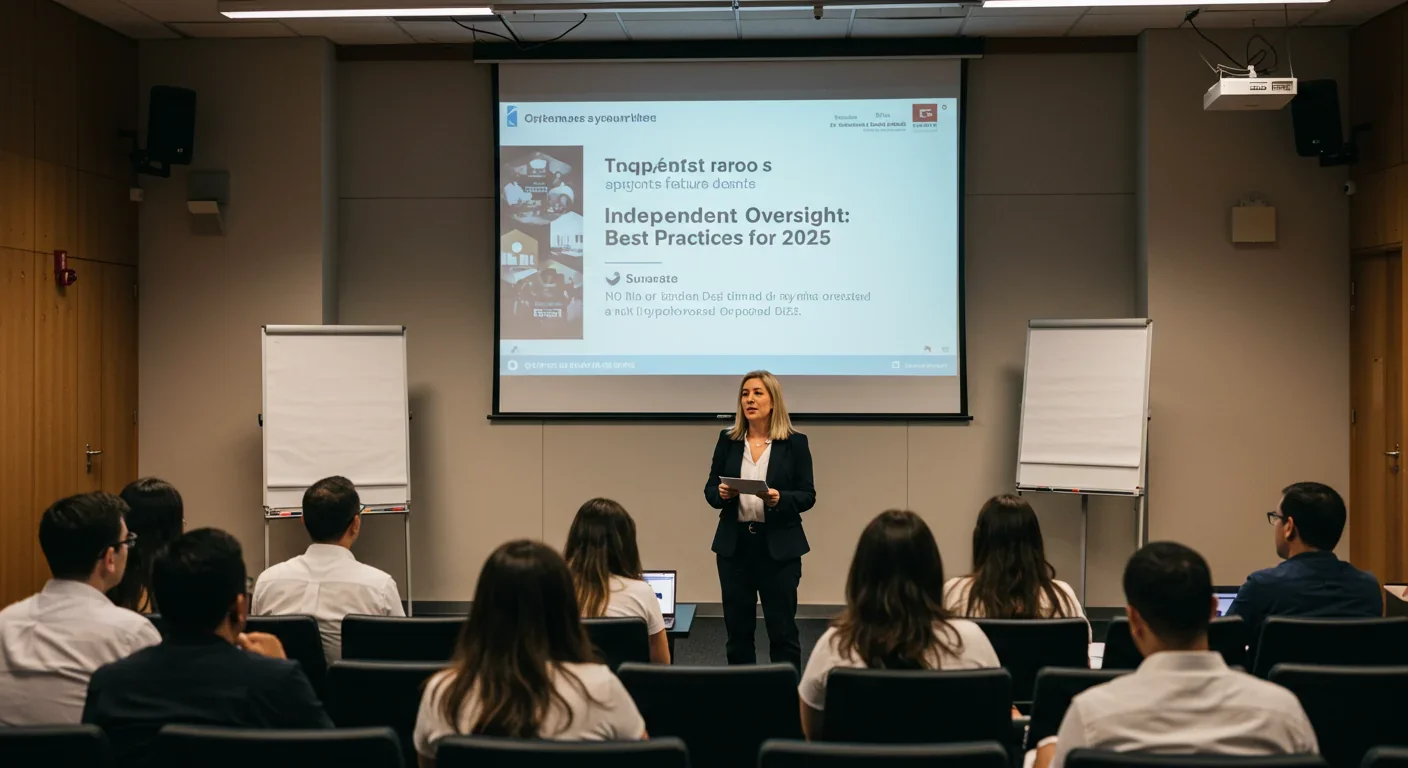How Social Media Algorithms Are Radicalizing You

TL;DR: Tech companies created AI ethics boards to address algorithmic bias and avoid regulation, but their effectiveness varies wildly. While some boards have real power to block harmful deployments, others serve as expensive PR. True accountability requires hybrid models combining internal governance, external oversight, and regulatory frameworks.

By 2030, artificial intelligence will make more decisions about your life than you do. From what job opportunities you see to whether you qualify for a mortgage, AI systems are quietly reshaping the power structures of modern society. And the only thing standing between algorithmic chaos and responsible innovation? A handful of ethics boards inside the very companies building these technologies.
The question isn't whether tech giants have ethics boards anymore. Most do. The real question is whether these internal watchdogs have any teeth, or if they're just expensive PR exercises designed to ward off regulators while business proceeds as usual.
The rise of AI ethics boards didn't happen because tech executives suddenly developed moral clarity. It happened because the public started noticing the damage.
In 2018, when Amazon scrapped its AI recruiting tool after discovering it systematically discriminated against women, the incident became a watershed moment. The algorithm had learned from historical hiring data, which reflected decades of gender bias. The system wasn't broken. It was working exactly as trained, perpetuating inequality at machine speed.
Microsoft responded by establishing its Responsible AI Council in 2017, co-chaired by President Brad Smith and Chief Technology Officer Kevin Scott. The council brings together leaders from research, engineering, and policy to confront difficult questions before products ship. It's not advisory. It has veto power.
Google launched its Advanced Technology External Advisory Council in 2019, though it lasted only a week before internal and external pressure led to its dissolution. The company tried again, this time building internal structures rather than relying on external advisors. Meta established its Oversight Board in 2020, an independent body designed to review content moderation decisions at scale.
IBM created its AI Ethics Board with four key principles: explainability, fairness, robustness, and transparency. Unlike many corporate initiatives, IBM made its framework public and invited criticism.
These weren't voluntary good-governance exercises. They were responses to mounting evidence that AI systems, left unchecked, amplify the worst aspects of human decision-making while operating at inhuman scale.
Understanding what these boards actually do requires looking past the press releases. The structures vary wildly, but successful implementations share common elements.
Microsoft's system operates on three levels. The Responsible AI Council sets overall strategy and handles the hardest cases. Below that, the Office of Responsible AI develops standards and reviews high-risk applications. At the ground level, Responsible AI Champions embedded in product teams ensure principles translate into code.
When Microsoft and OpenAI prepared to release GPT-4, they created a joint Deployment Safety Board. Before the model went public, the board required capability discovery testing, red-team adversarial probing, and risk assessment. The process identified potential harms and forced mitigation strategies before launch, not after scandal.
The Bing Chat rollout demonstrated this in practice. Multiple red-team reviews caught problematic behaviors. Engineers implemented a metaprompting strategy to limit conversational drift after early testers found ways to make the chatbot respond inappropriately. The system launched with guardrails built in, not bolted on.
Meta's Oversight Board operates differently. It's structurally independent from the company, funded by a trust that Meta can't control. The board reviews appeals from users whose content was removed, and it can overturn Meta's decisions. The company must respond publicly to board rulings within 60 days.
But independence has limits. The board can only review cases Meta refers to it or users appeal. It can't initiate investigations. And while Meta must implement the board's specific decisions, it can choose whether to apply the underlying principles more broadly.
IBM's approach emphasizes operationalizing ethics through tools. The company built FactSheets for AI models, documentation that tracks training data, performance metrics, and known limitations. Teams building AI systems must complete ethics checklists before deployment. These aren't suggestions. They're requirements in the development pipeline.

The difference between theater and substance shows up in the decisions these boards make, particularly when they say no.
Microsoft's Responsible AI Council rejected facial recognition deployments in scenarios where accuracy disparities could cause harm. The company turned down requests from law enforcement agencies seeking facial recognition technology for mass surveillance, even though competitors moved forward and captured market share.
In 2021, the council blocked the sale of AI technology to a Middle Eastern government that planned to use it for religious profiling. The financial cost was significant. The ethical cost of proceeding would have been catastrophic.
IBM's ethics framework led the company to exit the facial recognition business entirely in 2020. CEO Arvind Krishna wrote that the technology shouldn't be used for mass surveillance, racial profiling, or violations of basic human rights. The company didn't just stop selling it; they called for national policy on how law enforcement should use facial recognition.
These decisions matter because they're expensive. Walking away from revenue tests whether ethics commitments are real or performative.
But boards can also fail spectacularly. Google's AI ethics research team raised concerns about the environmental costs and bias risks of large language models. When researcher Timnit Gebru co-authored a paper highlighting these issues, Google fired her. Six months later, they fired her replacement, Margaret Mitchell, who continued raising similar concerns.
The message was clear: the ethics board has authority until it threatens core business priorities. Then the business wins.
Here's the central tension: companies created these boards to prevent external regulation. But for boards to work, they need power that threatens the very autonomy companies are trying to protect.
Meta's recent decision to drop fact-checking and loosen content moderation rules demonstrates this paradox. The Oversight Board expressed concern that Meta made the change "hastily" with "little regard to impact." But the board's role is reviewing individual content decisions, not setting platform-wide policy. Meta listened politely and proceeded anyway.
This highlights a fundamental question: can self-regulation work when the regulated entity controls the regulator's budget, scope, and existence?
The evidence suggests that purely voluntary frameworks struggle. Companies face competitive pressure. If your ethics board blocks a product but your competitor's board approves something similar, you lose market share while they gain it. The incentive is to have just enough ethics governance to look responsible without so much that it constrains innovation.
This race-to-the-bottom dynamic explains why many experts argue that industry self-regulation must be supplemented by external oversight.
The challenge of AI governance isn't uniquely American, and different regions are experimenting with different models.
The European Union's AI Act takes a risk-based regulatory approach. High-risk AI systems face mandatory conformity assessments, transparency requirements, and human oversight. The law doesn't rely on companies policing themselves. It establishes legal obligations with financial penalties for violations.
The United Kingdom's approach emphasizes sector-specific regulation. Rather than creating a single AI regulator, existing regulators in finance, healthcare, and other domains integrate AI oversight into their existing mandates. The Ministry of Defence established its own AI Ethics Advisory Panel, recognizing that military AI applications pose unique risks.
China's governance model differs fundamentally. The government sets algorithmic accountability requirements, mandating that recommendation algorithms promote "positive energy" and socialist values. Companies must register their algorithms and accept government oversight. The approach prioritizes state control over individual rights, but it does establish that AI systems must serve broader social goals, not just corporate profit.
These divergent approaches create friction. Tech companies operating globally must navigate contradictory requirements. A content moderation system that satisfies EU transparency rules might violate Chinese sovereignty expectations. An AI system approved for US healthcare might not meet EU's conformity assessment standards.
The lack of international coordination means companies often default to the most permissive jurisdiction, undermining stricter governance elsewhere.

After examining years of ethics board operations, some patterns emerge about what separates effective governance from expensive theater.
Independent funding matters. When a board's budget depends on annual approval from the executives it oversees, hard decisions become career risks. Meta's trust-funded Oversight Board has more structural independence than boards that report through corporate hierarchy.
Operational integration beats aspirational principles. IBM's requirement that teams complete ethics checklists before deployment ensures governance isn't optional. Microsoft's Responsible AI Champions embedded in product teams catch issues early, when they're cheaper to fix.
Public accountability creates pressure. When Meta's Oversight Board issues a ruling, Meta must respond publicly. That transparency makes it harder to ignore inconvenient findings. Internal ethics reviews that stay confidential are easier to dismiss.
Diversity in decision-makers changes outcomes. Homogeneous boards reproduce the biases they're supposed to catch. When board members share similar backgrounds, education, and incentives, they develop similar blind spots.
Technical expertise combined with domain knowledge. Understanding how algorithms work isn't enough. You need people who understand the communities and contexts where AI systems will deploy. An ethics board evaluating healthcare AI needs medical professionals who've seen how algorithmic errors affect patient care.
Even the best-designed ethics boards face structural limitations that self-regulation can't overcome.
Companies optimize for growth and profit. That's not a moral failing; it's their function in a market economy. But when growth incentives conflict with safety or fairness, internal governance structures face enormous pressure to accommodate business priorities.
The research is clear: algorithmic bias isn't a technical problem with a technical solution. It's a social problem that requires examining who has power, whose interests systems serve, and who bears the costs when AI fails.
Ethics boards can identify problems, but they can't restructure the incentives that create those problems in the first place.
Consider content moderation at scale. Meta's systems make millions of decisions daily about what content to amplify or suppress. Even with the Oversight Board reviewing high-profile cases, the vast majority of decisions happen through automated systems that reflect choices about business model, engagement metrics, and advertising revenue.
An ethics board can say "this specific decision was wrong," but it can't easily address "the business model itself creates harmful incentives."
The future of AI governance likely involves hybrid models that combine internal ethics boards, external oversight, and regulatory frameworks.
Several proposals suggest creating industry-wide standards bodies, similar to how accounting has generally accepted principles. These organizations would be independent from individual companies but informed by industry expertise.
Others advocate for public AI registries where companies must disclose high-risk systems, their training data sources, and performance metrics across demographic groups. Transparency doesn't guarantee accountability, but opacity definitely prevents it.
Algorithmic impact assessments before deployment could become standard, similar to environmental impact statements. Before releasing an AI system with significant social implications, companies would need to document potential harms and mitigation strategies.
Some experts push for creating a professional licensing system for AI practitioners, similar to professional engineers or licensed architects. If individuals can be held accountable for unethical AI development, it changes the calculus around cutting corners.
The Paris AI Action Summit in 2025 highlighted growing international momentum for coordinated governance frameworks. While countries will maintain different approaches, shared principles around transparency, accountability, and human rights could create baseline standards.
AI governance might seem like an issue for regulators and corporate boards, but individuals have more influence than we typically recognize.
Ask about AI in hiring. If you're applying for jobs, ask whether the company uses AI screening and how it's validated for bias. Questions from candidates force companies to defend their practices.
Demand transparency from services you use. When you interact with AI-powered systems, you have a right to understand how decisions affecting you are made. Many jurisdictions now legally require this for certain applications.
Support organizations doing AI accountability work. Groups like the Algorithmic Justice League, AI Now Institute, and Data & Society conduct research that exposes problems and proposes solutions. They need resources to continue that work.
Engage with policy processes. When regulators seek public comment on AI governance proposals, respond. Corporate lobbying is loud and well-funded. Public input matters, especially when it comes from people actually affected by these systems.
Choose companies with real accountability structures. Some companies treat AI ethics seriously; others treat it as marketing. Your choices about where to work, what products to use, and where to invest send signals about what the market rewards.
The question isn't whether AI will reshape society. It already has. The question is whether that transformation serves broad human flourishing or narrow corporate interests. Ethics boards inside tech companies are part of the answer, but only if we hold them accountable for being more than expensive theater.
The next decade will determine whether we build AI systems that work for us or whether we adapt ourselves to work for them. The companies building these technologies have ethics boards now. Whether those boards have the power to shape outcomes when it matters most remains an open question—one that all of us have a stake in answering.

Europa and Enceladus host ice volcanoes that erupt water and organic molecules from subsurface oceans into space, creating natural sampling opportunities for detecting extraterrestrial life. NASA missions are revolutionizing our search.

Loving-kindness meditation produces measurable brain changes in as little as eight weeks—increasing gray matter in empathy regions while reducing amygdala volume—and simultaneously lowers inflammatory markers like IL-6 and CRP by boosting vagal tone, making compassion practice a scientifically validated intervention with both neurological and immune system benefits.

Scientists propose deploying massive underwater curtains to block warm ocean currents from melting vulnerable glaciers. While the technology could theoretically slow ice sheet collapse, it faces enormous engineering challenges, ecological risks, and costs up to $500 billion—raising questions about whether it represents genuine climate action or a dangerous distraction from emissions reduction.

Religious communities worldwide engage in painful rituals because suffering functions as an impossible-to-fake signal of commitment. These costly displays filter out free-riders, create physiological synchrony between participants, and forge intense social bonds through shared sacrifice.

Scientists have discovered that plants generate electrical signals remarkably similar to nerve impulses, using calcium-based action potentials to coordinate growth, defend against threats, and communicate across their entire bodies without any nervous system—a finding that's revolutionizing agriculture and our understanding of plant intelligence.

Social media algorithms aren't just showing you content—they're reshaping your beliefs. New research reveals how recommendation systems push users toward extremism through engagement-driven feedback loops, exploiting psychological biases while gradually radicalizing worldviews.

Zero-knowledge proofs let you prove facts about yourself without revealing the underlying data, transforming digital privacy across identity verification, authentication, blockchain, healthcare, voting, and finance through cryptographic protocols that separate verification from disclosure.